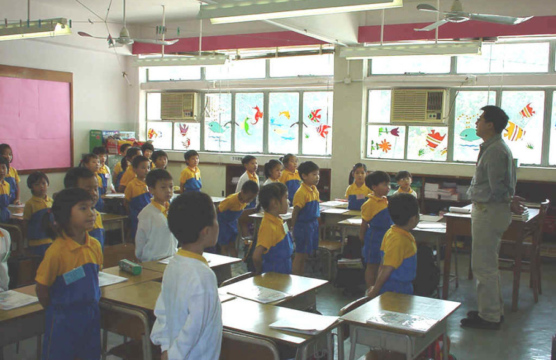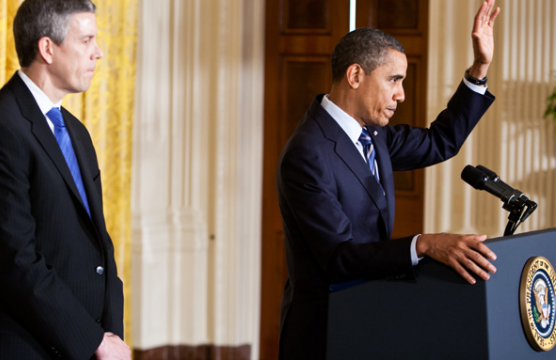
What the US Presidential Candidates Should Be Talking About
Three questions regarding education the 2012 presidential hopefuls should be pressed on.
This post is also available in: Spanish
The World Bank is launching a new book on teacher policy in Latin America today in Lima at a regional forum on teacher excellence co-hosted with Pontificia Universidad Católica in Peru. The book, Great Teachers: How to Raise Student Learning in Latin America and the Caribbean by Barbara Bruns and Javier Luque, analyzes key elements of teacher policy in the region and their impact on student learning.
President of the World Bank Group Jim Kim, World Bank Vice President for Latin American and the Caribbean Jorge Familiar, Peruvian First Lady Nadine Heredia (to be confirmed) and former Secretary of Education of Rio de Janeiro Claudia Costin, along with World Bank Lead Education Economist and author Barbara Bruns will speak at the launch. In addition, two current ministers of education—Peruvian Minister of Education Jaime Saavedra and Brazilian Secretary of Basic Education María Beatriz Luce—, Stanford University Economist Eric Hanushek, and the Director of the Public Policy Institute at Universidad Diego Portales in Chile, Gregory Elacqua will discuss ways to address challenges presented in the book. (You can follow the launch via Webcast and ask questions here.)
The high level participation at the forum, as well as the analysis and evidence presented in the book, are a reflection of just how important quality teachers are in improving public education. While it may seem obvious on the surface that teachers are crucial to learning, figuring out how to improve teaching in the region is easier said than done. The book sheds new light on the “how-to” debate by looking at how teaching and learning impact economic growth, who chooses to become a teacher, how teachers perform in the classroom, policies for teacher recruitment, support and incentives, and the politics of recent reform experiences. Throughout, it documents what is known, and is not known, about how well particular approaches work both in the region and elsewhere and gives examples of what governments are doing to address the diverse challenges in creating and keeping a top-notch teaching corps.
Although all the issues discussed in the book are important for understanding how to strengthen the teaching profession, I was particularly struck by the original research the Bank carried out between 2009-2012 on classroom dynamics in over 15,000 randomly-selected classrooms from a representative sample of schools in Brazil, Colombia, Honduras, Jamaica, Peru, Dominican Republic and Mexico’s Distrito Federal. Classroom interactions between students and teachers are crucial to the teaching/learning process, but very few Latin American and Caribbean countries have good information on how teachers manage their classrooms—from time spent on instruction, to use of materials, to the teaching strategies they employ and how well these capture student attention. The Bank’s study addresses these gaps and finds that these basic factors can have a profound impact on students’ opportunities to learn. Indeed, the study estimates that Latin American schools “lose” an average of a day a week of instructional time to inefficient classroom management or activities unrelated to learning. And that does not take into account the quality of instruction or content.
PREAL’s most recent Policy Brief “How Effectively Do Latin American Teachers Manage Their Classrooms to Support Learning?” summarizes key findings from the study presented in the book. Not surprisingly, the study finds that low levels of student learning are at least partially due to the low percentage of class time dedicated to instruction and low levels of student engagement. It also finds that teachers tend to rely on traditional learning methods (like the blackboard), spend 20-35% of time with students engaged in seatwork rather than active instruction, and make little use of existing ICT resources. However, classroom dynamics vary tremendously across and within schools, suggesting that school administrators and system managers have ample room to promote better instruction by regularly observing teachers’ performance, providing individual and system-level feedback, fostering the sharing of best practices, and helping schools and teachers use information to improve their performance and engage students. One of the most valuable aspects of the study, beyond the insights it provides into what is currently happening in LAC classrooms, is that it also takes the next step by offering practical suggestions on how to use classroom observation to improve instruction, and explaining how countries are working to implement those solutions.
An advance edition of Great Teachers, including detailed information on the classroom dynamics study is available in English and overviews are available in Spanish and Portuguese. Spanish and Portuguese versions of the full book will be available in August.
Three questions regarding education the 2012 presidential hopefuls should be pressed on.
Study uses four measures to compare seven countries in an effort to determine how the US might raise the quality of its teachers.
States can now qualify for flexibility on No Child Left Behind Act if they meet three requirements.

